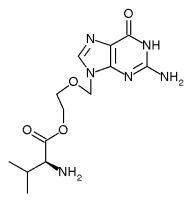(valacyclovir, GlaxoSmithKline)
An antiviral for treating herpes labialis (cold sores) in adults and adolescents aged 12 years and older. Previously approved for treating genital herpes and herpes zoster (shingles). The first oral treatment approved for this indication.
* Recommended Dosage: 2 g twice a day (about 12 hours apart) for 1 day, starting at the earliest sign of prodromal symptoms, such as tingling, burning, or itching. Pregnancy category B.
* Special Considerations: Patients should have the drug at home between outbreaks, so they can start treatment rapidly No efficacy data are available on effectiveness when started after onset of clinical signs, such as papules, vesicles, or ulcers. Even at the 2-g dose that was used in clinical trials, adverse effects were similar to those seen with placebo, according to Dr. Stephen Tyring, professor of internal medicine, dermatology microbiology and immunology at the University of Texas, Galveston.
Comment: Approval was based on two placebo-controlled studies of 1,856 otherwise healthy adults and adolescents aged 12 and over with recurrent herpes labialis (at least four outbreaks in the previous year). Those who took Valtrex when they began to experience the typical prodrome had significant reductions in duration of outbreaks; many were able to abort the outbreak, said Dr. Tying, the principal investigator. Most had started treatment within 2 hours of symptoms. (Two days of treatment was not more effective than one.)
Episodes lasted a mean of 5.2 days in the Valtrex group and 7.6 days with placebo; outbreaks were aborted in 45% of those on Valtrex vs. 37% of those on placebo. The mean duration to lesion healing was almost 5 days with Valtrex and about 6 days with placebo, according to Dr. Tying.
The ability of Valtrex to prevent outbreaks is unique among approved cold sore therapies, he said. Previously approved prescription agents--topical penciclovir (Denavir) and topical Zovirax (acyclovir)--"only treat the tip of the iceberg" and do not prevent outbreaks. A high oral dose is "the logical way to attack a problem that has its source deep in the nerve," he said. "The real problem is the infected nerve, not the lesion on the lip, which is the end product."
Dr. Tyring is on the speakers' bureau of GlaxoSmithKline and serves as a consultant to the company.
COPYRIGHT 2002 International Medical News Group
COPYRIGHT 2002 Gale Group



